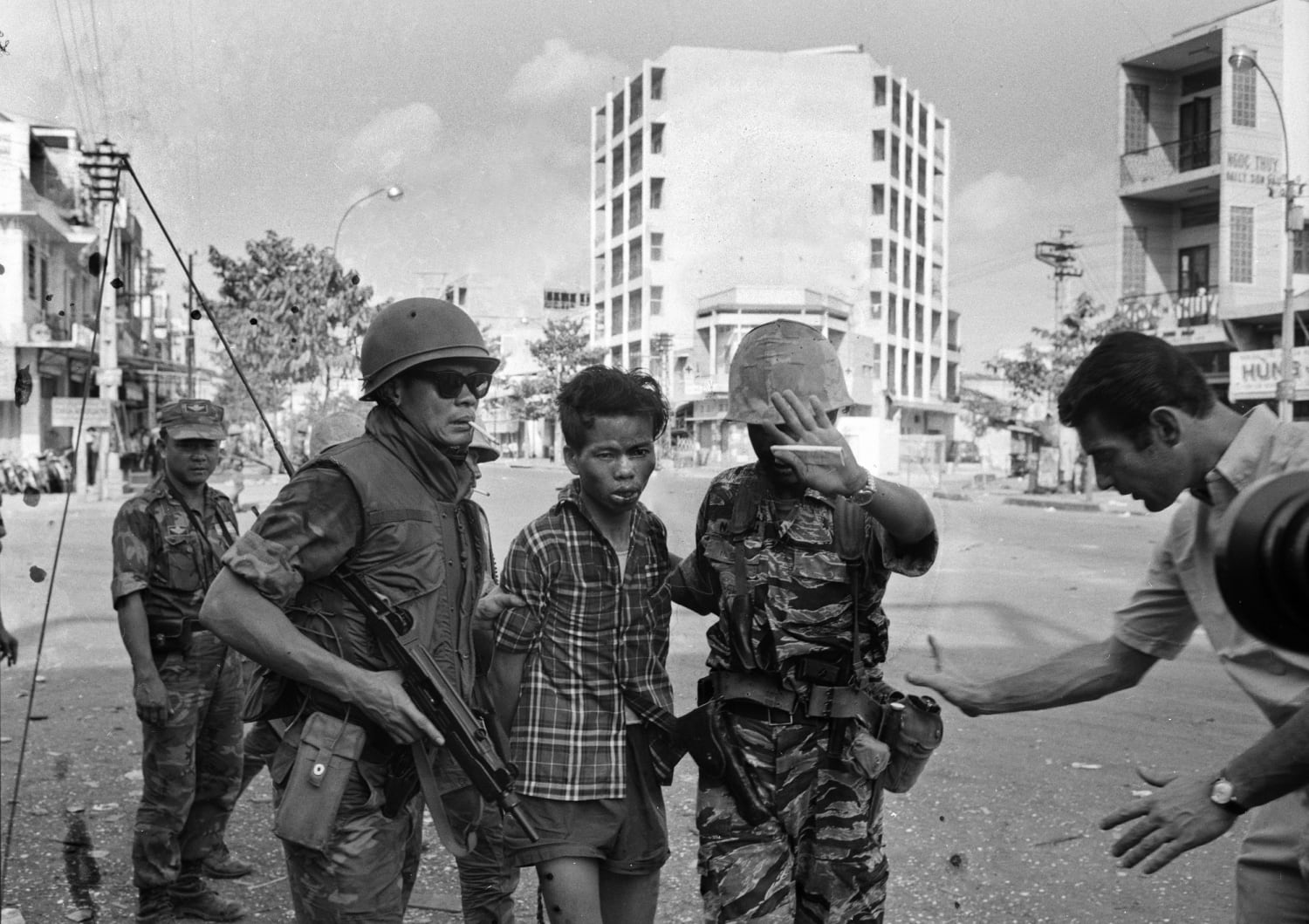
Ever wondered about the story behind the iconic Saigon Execution photo? This powerful image, captured during the Vietnam War, has left an indelible mark on history. Taken by photojournalist Eddie Adams on February 1, 1968, it shows South Vietnamese General Nguyễn Ngọc Loan executing a Viet Cong prisoner. The photograph's raw intensity shocked the world, becoming a symbol of the war's brutality. But there's more to this moment than meets the eye. From the context of the Tet Offensive to the personal stories of those involved, this post dives deep into the layers of history, controversy, and impact surrounding this unforgettable snapshot. Let's uncover 37 intriguing facts about the Saigon Execution photo.
Key Takeaways:
- The Saigon Execution photograph, taken during the Vietnam War, shocked the world and shifted public opinion. It highlights the power of photojournalism in shaping history and sparking important conversations about war and humanity.
- This iconic image challenges viewers to think critically about the complexities of war and the role of media in shaping public opinion. It serves as a powerful reminder of the need for compassion and understanding in times of conflict.
The Saigon Execution: A Snapshot in History
The Saigon Execution photograph, taken during the Vietnam War, remains one of the most iconic and controversial images in history. Captured by photojournalist Eddie Adams, it depicts a moment of raw brutality that shocked the world. Here are some compelling facts about this powerful image.
-
The photograph was taken on February 1, 1968, during the Tet Offensive, a major escalation and one of the largest military campaigns of the Vietnam War.
-
Eddie Adams, the photographer, worked for the Associated Press and won a Pulitzer Prize for this image in 1969.
-
The photograph shows South Vietnamese National Police Chief General Nguyễn Ngọc Loan executing a Viet Cong prisoner named Nguyễn Văn Lém.
-
Nguyễn Văn Lém was accused of killing the family of a South Vietnamese officer, including six children.
-
The image was captured in Saigon, now known as Ho Chi Minh City, on a street that was later renamed.
The Impact of the Photograph
The Saigon Execution photograph had a profound impact on public opinion and the course of the Vietnam War. It brought the harsh realities of the conflict into living rooms around the world.
-
The image was published on the front pages of newspapers worldwide, causing widespread outrage and condemnation.
-
It played a significant role in shifting American public opinion against the Vietnam War.
-
Eddie Adams later expressed regret over the photograph, believing it unfairly vilified General Loan.
-
Despite its graphic nature, the photograph was not censored by major news outlets at the time.
-
The image is often cited as an example of the power of photojournalism to influence public perception and policy.
The People Behind the Image
Understanding the individuals involved in the Saigon Execution photograph provides deeper insight into the complexities of war and human behavior.
-
General Nguyễn Ngọc Loan was a prominent figure in the South Vietnamese military and a close ally of the United States.
-
After the war, General Loan moved to the United States and opened a pizza restaurant in Virginia.
-
Nguyễn Văn Lém, the executed prisoner, was a member of the Viet Cong, the communist forces fighting against South Vietnam and its allies.
-
Eddie Adams continued his career in photojournalism, covering conflicts around the world until his death in 2004.
-
Adams and Loan met again years later, and Adams apologized for the impact the photograph had on Loan's life.
The Legacy of the Saigon Execution Photograph
The legacy of the Saigon Execution photograph extends beyond its immediate impact, influencing art, media, and historical discourse.
-
The photograph has been referenced in various films, documentaries, and books about the Vietnam War.
-
It is often included in discussions about the ethics of war photography and the responsibilities of journalists.
-
The image is displayed in museums and galleries, including the Newseum in Washington, D.C.
-
It has been used in educational settings to teach about the Vietnam War and the power of visual media.
-
The photograph remains a subject of debate regarding its portrayal of the complexities of war and the individuals involved.
Controversies and Misconceptions
The Saigon Execution photograph has been surrounded by controversies and misconceptions since its publication.
-
Some viewers mistakenly believed the photograph depicted an American soldier executing a Vietnamese prisoner.
-
There were claims that the photograph was staged, which have been debunked by multiple sources.
-
The context of the execution, including the alleged crimes of Nguyễn Văn Lém, is often overlooked in discussions about the image.
-
General Loan faced significant backlash and threats after the photograph was published, affecting his post-war life.
-
The photograph has been used in anti-war propaganda, sometimes without proper context or explanation.
The Role of Photojournalism
The Saigon Execution photograph highlights the crucial role of photojournalism in documenting and shaping history.
-
Eddie Adams' work exemplifies the risks and responsibilities of war photographers.
-
The photograph is a stark reminder of the human cost of conflict and the importance of bearing witness.
-
It underscores the ethical dilemmas faced by journalists in capturing and publishing graphic images.
-
The image has inspired generations of photojournalists to pursue stories that reveal the truth about war and injustice.
-
It serves as a powerful example of how a single photograph can change the course of history.
Reflections on the Saigon Execution
Reflecting on the Saigon Execution photograph offers valuable lessons about war, media, and humanity.
-
The image forces viewers to confront the brutality of war and its impact on individuals.
-
It challenges the notion of clear-cut heroes and villains in conflict.
-
The photograph encourages critical thinking about the role of media in shaping public opinion.
-
It highlights the importance of context in understanding historical events.
-
The image remains a powerful symbol of the Vietnam War and its lasting legacy.
-
It serves as a reminder of the need for compassion and understanding in times of conflict.
-
The Saigon Execution photograph continues to provoke thought and discussion, ensuring its place in history for generations to come.
Reflecting on the Saigon Execution
The Saigon Execution photo, captured by Eddie Adams, remains one of the most powerful images from the Vietnam War. It shows the brutal reality of conflict and the human cost involved. This single moment, frozen in time, influenced public opinion and highlighted the complexities of war.
Adams' photograph did more than just document an event; it sparked conversations about ethics, media, and the impact of visual storytelling. The image serves as a stark reminder of the harsh truths that often get overlooked.
Understanding the context and repercussions of this photo helps us appreciate the role of journalism in shaping history. It also underscores the importance of remembering past events to learn and grow. The Saigon Execution photo is not just a snapshot; it's a lesson in humanity, conflict, and the power of the lens.
Frequently Asked Questions
Was this page helpful?
Our commitment to delivering trustworthy and engaging content is at the heart of what we do. Each fact on our site is contributed by real users like you, bringing a wealth of diverse insights and information. To ensure the highest standards of accuracy and reliability, our dedicated editors meticulously review each submission. This process guarantees that the facts we share are not only fascinating but also credible. Trust in our commitment to quality and authenticity as you explore and learn with us.


